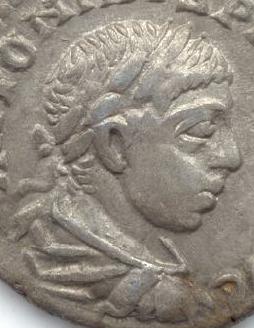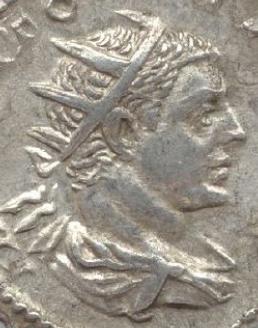Roman Propaganda on
Portraits of Elagabalus
The Roman emperor know as Elagabalus was born Varius Avitus Bassianus, at Emessa in Syria sometime between AD 203 (Chronicles of the Roman Emperors by Chris Scarre) and AD 205 (Roman Coins and their values by David Sear). As the son of Varius Marcellus and Julia Soaemias he was hereditary high priest sun god Elagabal and his commonly accepted name of Elagablus was more a title than his name and does not appear on any of his coins. His grandmother was Julia Maesa, sister of Julia Domna, making him a member of the Severan dynasty as the nephew of Caracalla.
He overthrew Macrinus on June 8th AD 218, with the support of the army in part because of rumors his father was Caracalla making him the legitimate heir of the Severan Dynasty. The rumors were probably not true but were enough to get him declared emperor. At the time he was between 13 and 15 years old and now sole Emperor and it was not certain the army would continue to support and follow a child emperor.

This portrait from a coin struck immediately upon his accession to the throne was issued at an eastern mint, possibly his home town of Emessa (or possibly Antioch), so it is likely the celators had actually seen him and could depict him accurately on this coin. It was used in payment of his first donative, a reward to the army who helped him gain power. He appears as the 13 to 15 year old he was this hardly instills a sense of confidence in a strong, firm ruler who could lead the Empire out of the previous year's chaos.
Understanding the majority of Romans, including much of the army, would never see their Emperor in person the power behind the throne (probably his mother) understood his coins would soon be circulating throughout the Empire and his portrait on them could be present to create the impression he was older than he actually was.

This portrait depicts Elagabalus artificially aged to appear in his 20's or even early 30's, yet the antoninianus it comes from was issued in AD 219, less than a year after the denarius above when Elagabalus was no more than age 16 and may have been as young as 14. It was likely issued to pay his second donative to the army upon his first arrival in Rome, and they are the most important people he would have wanted to give this false impression to. He proved an unsavory character who's actions alienated the Roman people, and on March 11 of AD 222, he and his mother were assassinated by his personal guard.
One does not have to look far to see other artificially age adjusted Roman coin portraits. The first Roman emperor, Augustus, was never depicted older than his 30's, even on his last coins struck when he was 77 years old. Gordian III is often depicted as a grown man even though he came to the throne aged 13 and died at 19. One of the most extreme examples are portraits of Philip II who is sometimes depicted as a grown man possibly even in his 40's, yet he was only 11 years old when he and his father were assassinated in AD 249.
| 


